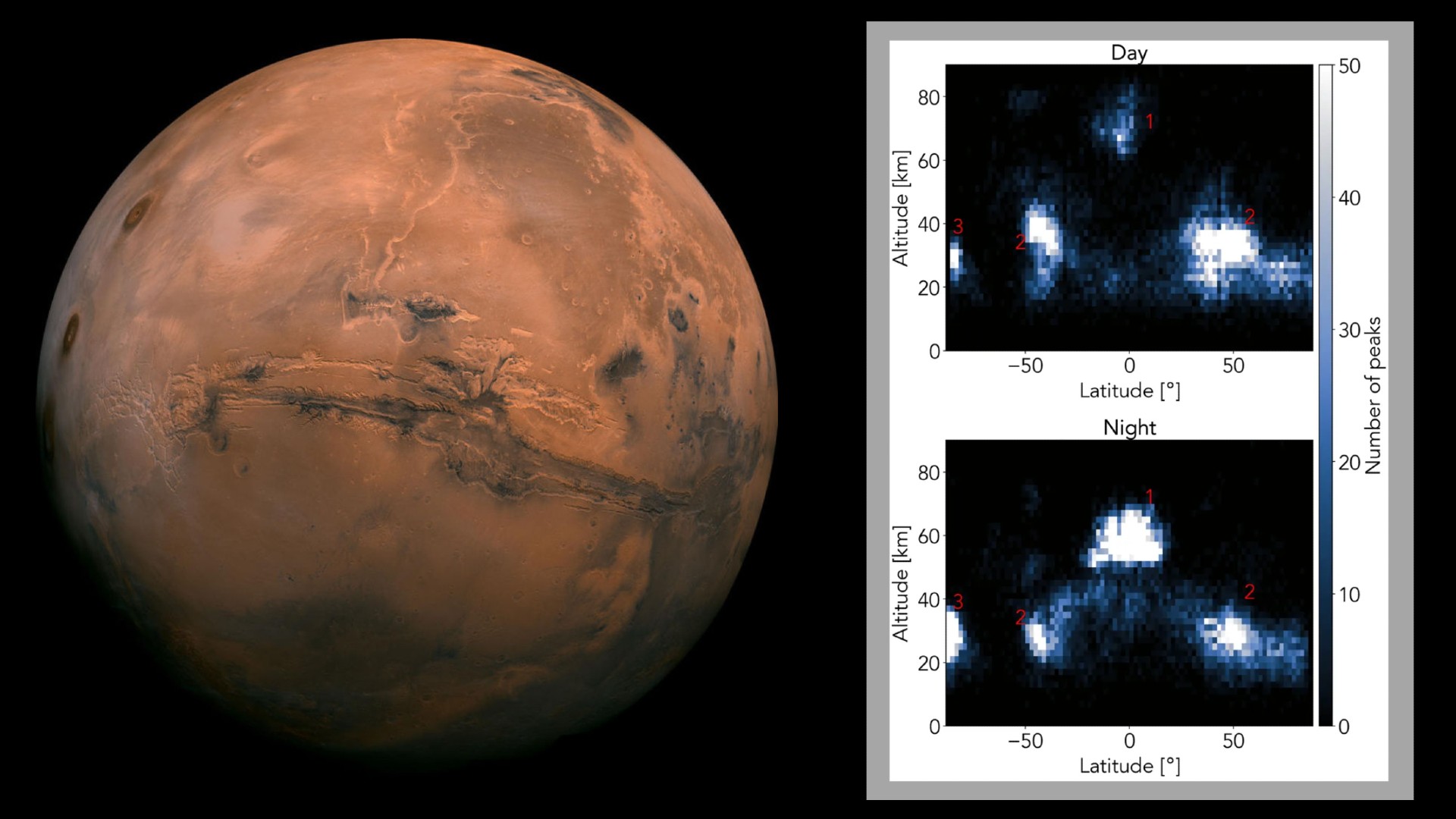
An inspirational team of citizen scientists working with NASA have mapped the clouds of Mars, finding patterns of cloud clustering and behavior.
As NASA's Curiosity and Perseverance rovers explore Mars at ground level, patrolling the ancient lake beds of the Gale Crater and the Jezero Crater, respectively, a team of participants in the Cloudspotting on Mars project, a NASA citizen science project, had loftier goals. Literally. The group has been using data collected by the Mars Reconnaissance Orbiter (MRO) to map the clouds over the Martian landscape.
For this research in particular, the citizen scientists used data from an MRO instrument called the Mars Climate Sounder, which views Mars' atmosphere in visible and infrared light to measure its temperature, humidity, and dust content in vertical "slices" to predict the climate and weather of the Red Planet.
The Cloudspotting participants were able to build several cloud maps for Mars that illustrate the times at which clouds were identified and the regions in the atmosphere of the Red Planet where they were found.
Related: Curiosity rover discovers new evidence Mars once had ‘right conditions’ for life
Understanding the clouds over Mars is important because they can both cool and warm the atmosphere of the planet, meaning they are vital for understanding Martian weather and climate. Icy clouds can form high in the atmosphere of Mars in a region called the "mesosphere" at an altitude of between 18.6 miles (30 kilometers) and 31 miles (50 kilometers) over the Martian surface.
These "mesospheric clouds" are interesting because though Mars is a dry and arid planet, water vapor is found in the atmosphere, and it can form water-ice clouds. The frigid atmosphere of Mars is 95% carbon-dioxide, meaning clouds of "dry ice" can also form here.
Revealed in the citizen scientists' cloud maps are populations of carbon dioxide ice clouds at high altitudes, clouds that form near the poles of the Red Planet, and also water-ice clouds.
These latter clouds are believed to form during particular dusty seasons on Mars, particularly during spring and summer in the planet’s southern hemisphere when warmer temperatures produce stronger winds that stir surface dust, creating spinning columns of dust called dust devils. These dust devils are believed to carry water molecules up into the atmosphere of Mars, and as the dust is suspended there, this helps prevent water from falling back to Mars’ surface as rain or snow.
Scientists believe such dust behavior in Mars' ancient past may have been at least partially to blame for the Red Planet losing much of its water to space, transforming it into the barren and arid landscape we see today.
The structure of the clouds seen by the Cloudspotter participants follows large-scale temperature oscillations in the atmosphere of Mars called thermal tides. The team also found that in the colder regions of the Martian atmosphere, clouds were more common.
"Thank you to all the Cloudspotting on Mars participants for driving this research forward!" project principal investigator and NASA Jet Propulsion Laboratory researcher Marek Slipski said in a statement.
There is much more to this data collected by the MRO — launched in August 2005 and arrived at Mars in Feb. 2006 — than revealed in this research. More images are available online for scrutiny, all from the first set of Mars observations from the MRO "Year One" data collected from December 2007 to October 2009 (Mars takes 687 days to orbit the sun).
Additionally, the analysis of the second Mars Year data collection is only half completed. When finished, this will help reveal how cloud formation is impacted by changing dust conditions on Mars.
If you want to get involved in the search for clouds in the atmosphere of Mars, you can join the hunt here. If clouds aren't your bag, you can look at other NASA citizen science projects to get involved with here.
The team's work will be published in a special edition of the journal Icarus called "MRO: 16 Years at Mars" and is available online here.







